

Space 1999 Model kits: MPC Eagle with Cargo Pod packaging part 2
As part 2 of our look into the packaging for the new MPC Eagle with Cargo Pod model kit, we have a special article written by Jim Small. Jim is our go-to guy for all of our sci-fi model kit buildup work. He also supplies endless consulting on all of our sci-fi kits and especially everything Space:1999 related. In our last blog post, I mentioned that I had him on the hook to do a little scratch-building/heavily altering a set of Eagle nose cone parts to show a wrecked nose cone for the box bottom and a few stand-in mockup parts that could be used for reference for the box illustration. You’ll find, as you read, that Jim really went above and beyond what I asked for. My kudos and many thanks to him for that!
Special Box Art Effects, One Shot at a Time.
James Small, www.smallartworks.ca
The newest release in Round 2/MPC’s fantastic Space: 1999 lineup is the Cargo Eagle with Winch Pod. As with every great kit, there needs to be great packaging. The work prepared for the box cover needs to be engaging and authentic to satisfy discerning fans today. Jamie Hood, Round 2’s senior designer, product development expert and resident Sci Fi artist is, as usual, right on top of his game with the soon to be revealed new boxtop design showing the iconic Moonbase Alpha workhorse in the fantasy situation as seen in the opening episode, “Breakaway”!
Although another one of Jamie’s gorgeous hand painted illustrations will grace the main box cover, he needed some model photography to flesh out the box bottom and sides to show off how great this kit is, and he asked me to help produce some of that work. I had been supplied test shots of the new Cargo Pod and accessories which I built, finished and used in conjunction with an existing Eagle model I had previously built.
Jamie knows how much I love to photograph models in a dramatic fashion, so he asked me to try and recreate some original scenes from the show using the actual built and painted kit. Jamie started by showing me some screen grabs of the scenes he wanted to recreate. Because of the predetermined photographic layout Jamie had provided, I knew that some of the pictures had to be choreographed somewhat differently than the screen grabs to accommodate the spread.
Two models made using test shots of the new Cargo pod and accessories, one painted, the other left unpainted but decaled to show how great the kit can look even without any painting at all! The special machined aluminum accessory sets are also attached to the models.
Normally I like to do all my photography completely “in camera” with no digital effects, but in this case because of the limited space in my shop and the expanse of the scenes needed I had to cheat and use Photoshop to assemble the various elements that had to be shot to create the visuals. Also, one of the shots needed to have three Eagles in the picture, but I only had one finished model at my disposal at the time so I had to do some digital manipulation. The picture would also show the red striped Rescue Eagle, but I had only a finished plain white passenger pod available which was earmarked for a customer so I couldn’t paint it. Jamie would later add the red stripes in digitally.
I also needed to scratch build some props not included in the kit to make the scenes required for the box art so I built some quick-and-dirty replicas to scale with the 22” model to provide the necessary backdrop. I made correctly scaled light stands, a simple rectangular landing pad matching the original, a nuclear waste disposal area cone and a “pit” that contained the canisters which matched what was seen in “Breakaway”. Jamie also liked the idea of showing the Eagle carrying away the damaged nosecone as seen in the episode “Missing Link”, so he sent me a spare nosecone from his parts bin which I re-worked to simulate the banged-up cockpit section.
Making the props was a LOT of fun for me as I do love to scratch build and modify stuff. It gives me some real creative license as well as the challenge of reproducing the original models used in the show from scratch. Time was limited so in true traditional VFX style I built everything with just the photography in mind. The waste area cone, for example, was made from a disposable plastic martini style cup and detailed to suit.
The “nuke dome” being started, the cone cut from a plastic martini glass of the type seen at left which coincidentally has the close-enough-to-work angled sides.
Details added to the cone using sheet and strip styrene.
The top of the cone is turned on a lathe from a piece of leftover resin from another project.
The “damaged” nosecone was detailed only on the side that the camera would see. I cut out panels, detailed the voids with kit bashing and made dents on the surface, simulating the damage incurred during a crash landing, using heat from a small blow torch (very gingerly used!) and a Dremel tool. The opposite side, left mostly unfinished, had a plug-in mount installed where the left sensor dish would be so it could be propped up with the supporting rod (simply a wooden dowel) positioned away from the camera.
The Eagle nosecone modified with kitbashed parts put into into holes cut out of the kit and painted to resemble crash damage.
I also put functioning LEDs into the light stands and the cone beacon to add authenticity.
Four light stands were fabricated using sheet styrene and square tubing. These would later be mounted to a base which supplied the power using a 3 volt battery box underneath.
Testing the lights on the stands. Three 5mm “Straw Hat” style LED’s were used in each stand.
The red areas on the trunk of the light stands were also to appear lit up, but this was a VFX cheat, borrowed from Brian Johnson and his crew when they lit up the main model of Moonbase Alpha’s windows, by using red reflective “Scotchlite” tape applied that would bounce the light back to the camera when it was shone from the camera’s point of view, just the same way road signs are lit with car headlights.
All the finished props built for the box art photo shoot.
Some of the shots I did were the relatively simple ones, those shot against a black velvet background for the outer space beauty shots of the model shown on the sides of the box cover. Because I knew that the motif of colour that Jamie had designed for dramatic impact was to have a significant red tint, I used a red fill light to enhance the shots. I also shot a couple using green and blue fill light to impart a more colourful tapestry in case he had some other ideas in mind, but Jamie wisely rejected them.
The finished Cargo Eagle model shot against black velvet and fill-lit with a red spotlight for dramatic effect.
The rectangular landing pad the Eagle is shown sitting on with its flatbed loaded with nuclear waste canisters was made quickly from sheet styrene using screen grabs as a guide for proportion and detailing to scale with the 22” kit. Coincidentally, the actual VFX shot for the episode used the like-scaled studio model 22” Eagle!
Jamie H. butting in here. Just for the record. I discussed making prop “stand-in’s” with Jim, all I asked for were rough placeholders. I told him to take some photos of the Eagle matching the angles shown in the unloading scene because it was a nice angle of the ship. Much to my surprise he sent me some photos one morning of the platform itself! Textbook example of “over-delivering.”
Lunar regolith was simply made from sprinkled concrete powder on the 3 foot square work surface. The waste cone was repositioned for different exposures and assembled in Photoshop to make it look as if there were several of them in the scene. Since a true “multiple exposure” is impossible with a digital camera (I currently use a Canon Rebel T3i), this compositing technique was necessary. The same thing was done with the four light stands to make it appear that there were more of them in the scene.
All the shots taken for the Eagle sitting on the pad with the waste cones surrounding it. Several shots were done identical except for lighting effects and the waste cone prop repositioned for each shot so that when composited, it will look like many cones surround the model using the single prop. Not all the pictures were used in the final comp, of course, but I took a lot of extra shots to provide different options.
The models were all photographed with the camera mounted to a tripod and suitably lit. Time exposures had to be used to achieve maximum depth of field. The hanging “damaged” nosecone and waste canisters were solid mounted and shot separately to be matted in later, as just the slightest movement during exposure with them hanging off the Eagle would have blurred them in the picture.
In some of the examples of the raw pictures shown you can that see some of the elements were shot against a green screen thinking this would be helpful in isolating them for compositing, but in reality this caused more problems than it solved due to fringing and “green spill”, so that idea was abandoned and I just used the ones shot against black velvet instead.
Some of the elements shot separately which would later be combined into the finished VFX pictures. Not all shown were used, some were used that are not seen here. Some colour correction and sweetening would also be employed to maximize the look of the finished composites.
Two of the scenes also required mountains for the background and foreground hills. Because of the limited space on the table I actually made the distant mountains from small pieces of carved foam, sprayed with gray primer which further textured them and sprinkled with concrete dust. These mountains in reality were just about 6 inches wide or so, but shot in extreme closeup and lit harshly. They were simply matted in behind the models. A similar technique was also used by Johnson’s VFX crew for distant mountain ranges, but without the aid of digital compositing! Instead, they had the miniature mountain photographs blown up and mounted to large wooden flats, propped up behind their model sets. I had considered doing the same thing, but it was far less expensive for me to plop them in using Photoshop.
In addition to these VFX shots I also took a series of photographs that were designed to help Jamie compose his painting, but he will cover those in his own article shortly, and are therefore not presented here. I also shot several “orthographic” pictures of the finished model for the box tray sides to show decal placement and paint schemes for the consumer to use as reference. The miniature was propped up in front of a black velvet backdrop, suitably lit and shot with a 300mm telephoto lens from about 25 feet away to help eliminate perspective distortion, making the picture plane look as close to a blueprint-like image as possible.
The three finished composites using the previously photographed elements. You will find these images gracing the box tray. Compare to the inspirational screen caps from the show.
I always have a lot of fun building models, but just as fun is when I have the opportunity to recreate the spectacular scenes that remind us why we loved a TV show like Space: 1999 in the first place.
Special thanks to Jamie Hood and all the wonderful people at Round 2 for finding a place for my work to be included as a part of the box art that will soon be on hobby store shelves for everyone to enjoy, containing yet another fantastic kit. Dreams are continuing to come true, thanks to Round 2!
You are welcome, Jim.
If you want to learn more about model photography, be sure to check out the article Jim wrote on the Central Nova Scotia Modelers web page here.
Next time, we will reveal the box illustration…

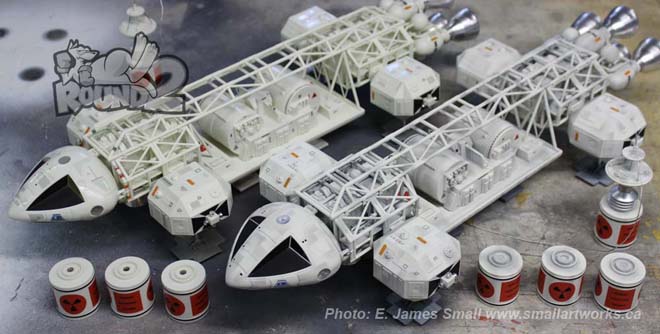
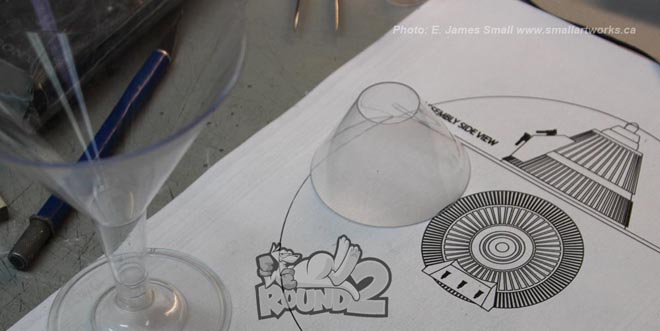
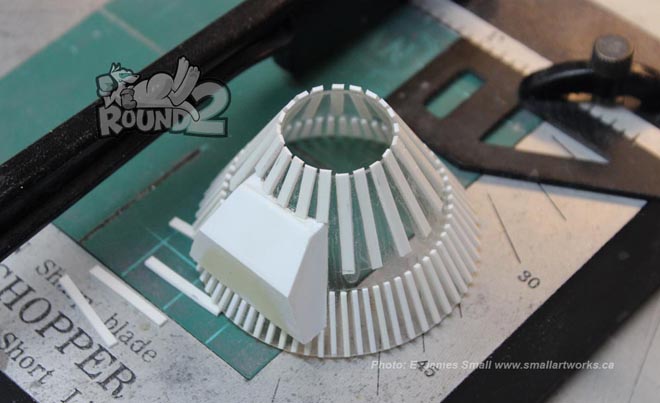
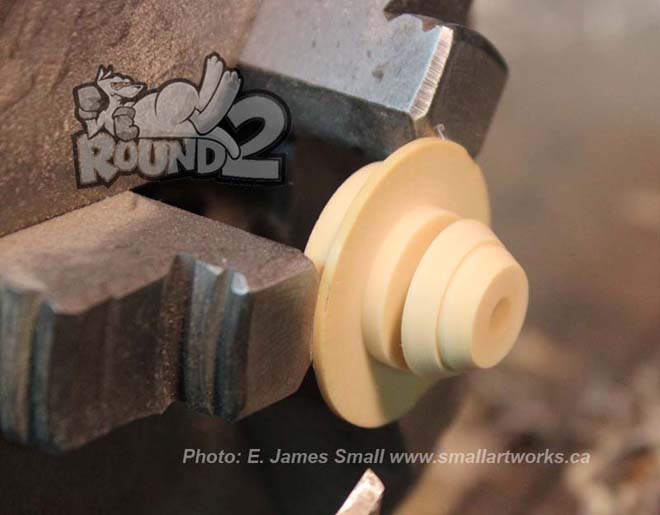
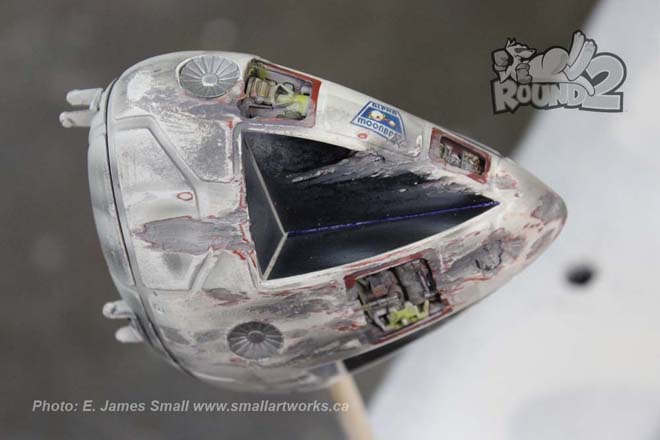
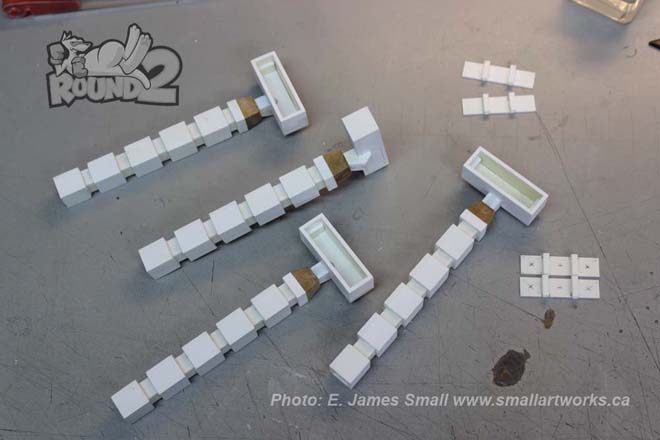
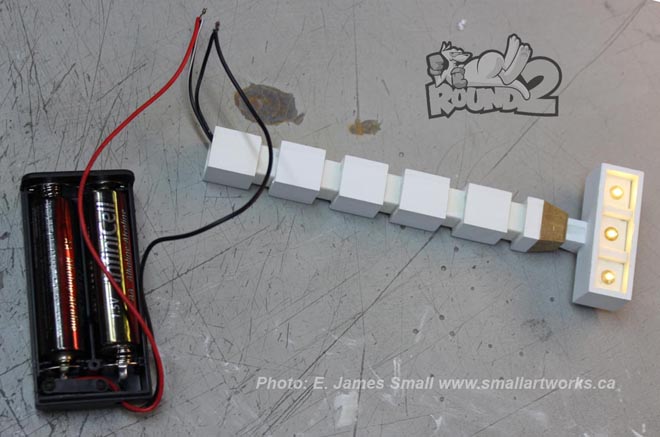
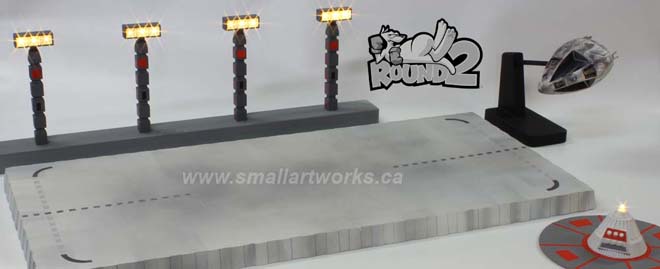
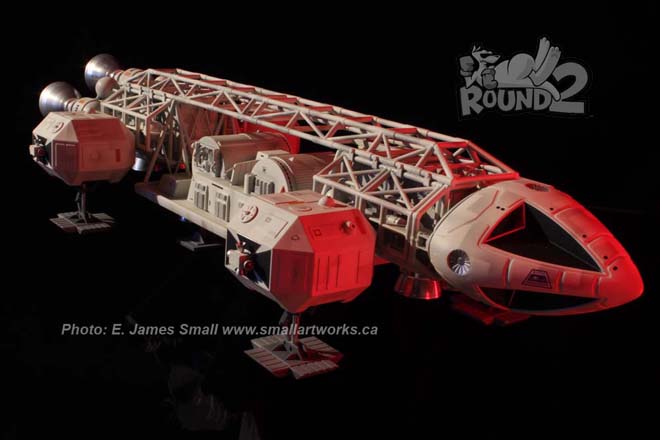
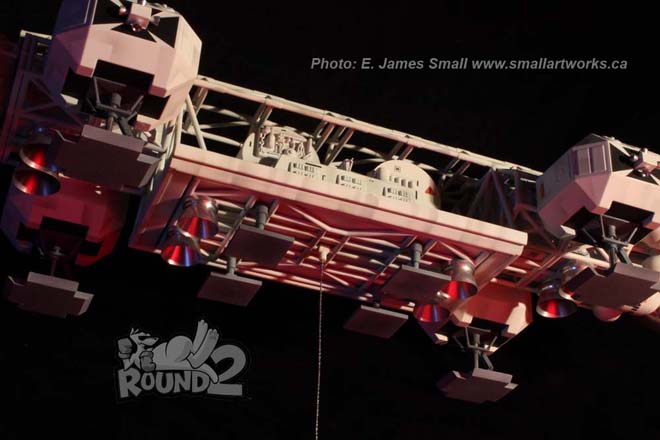
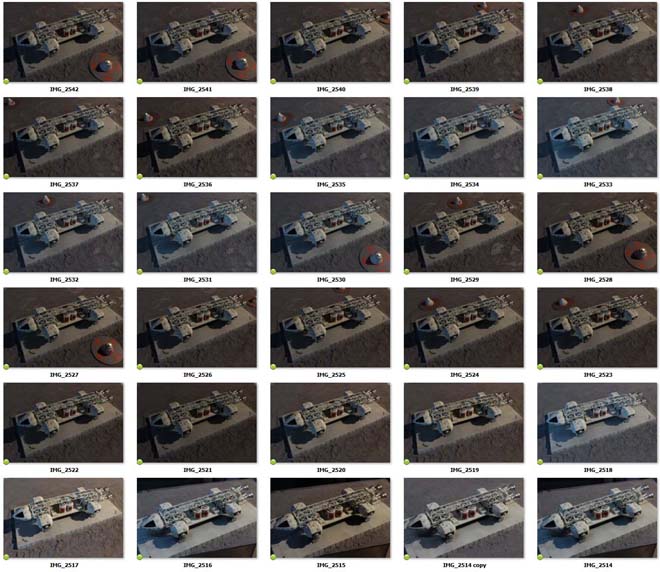
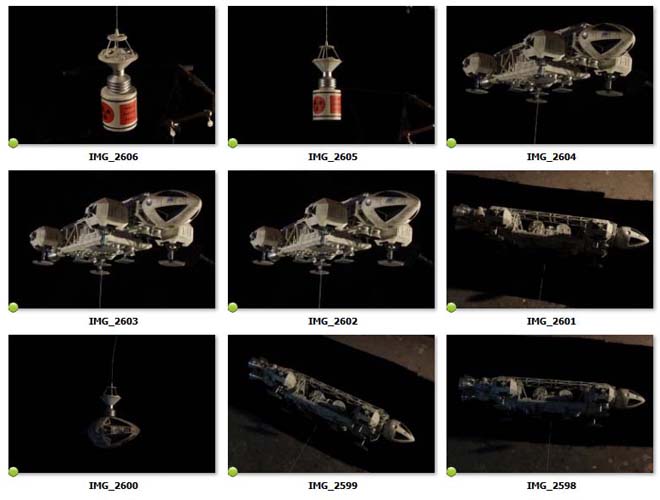
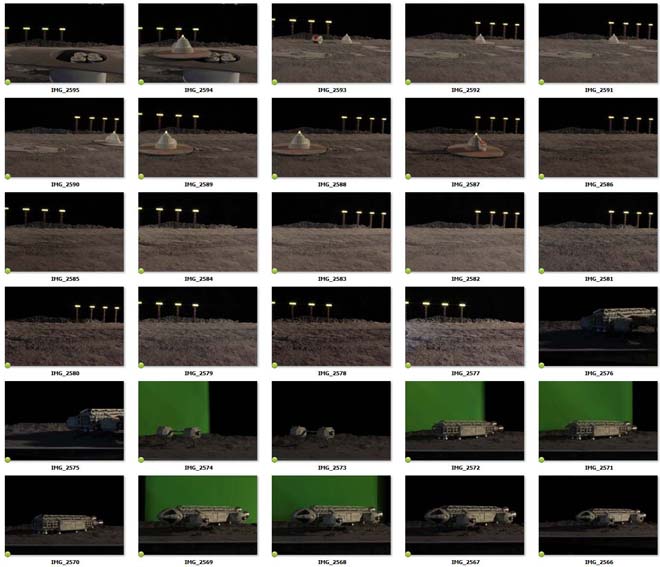
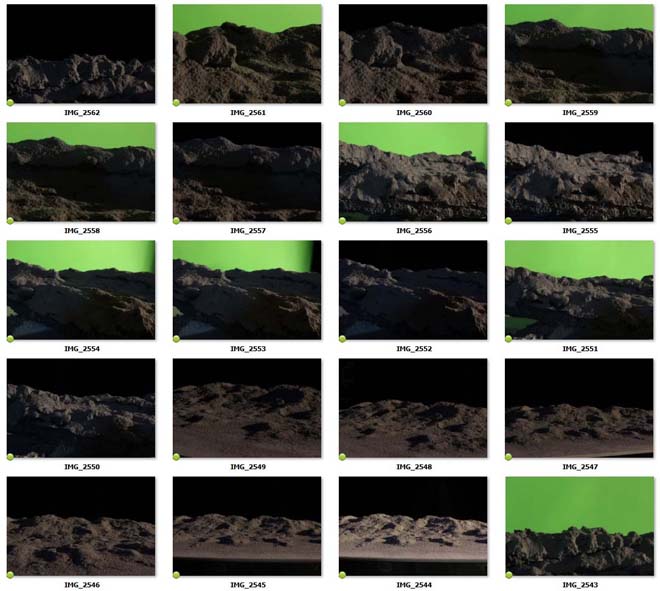
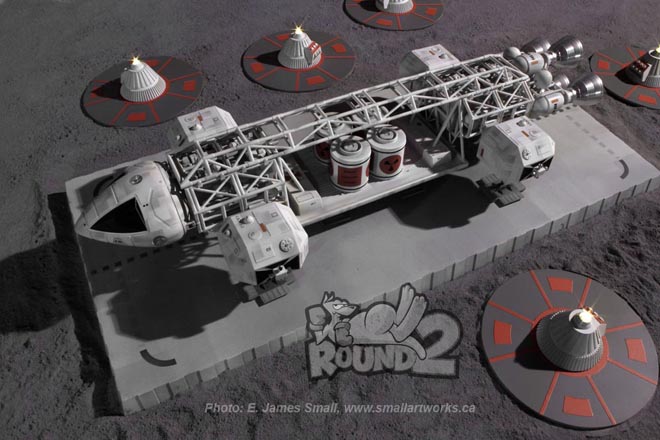
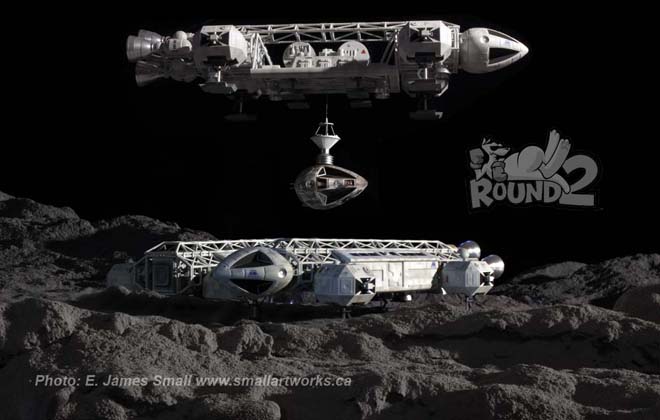
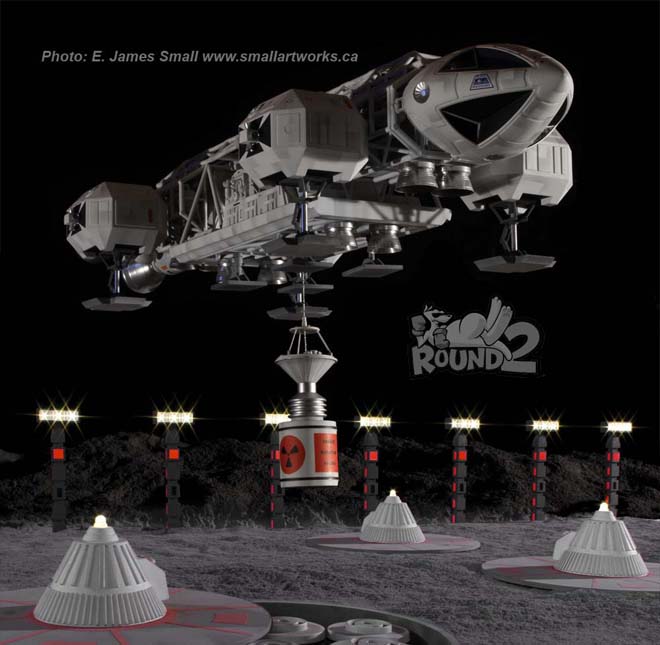
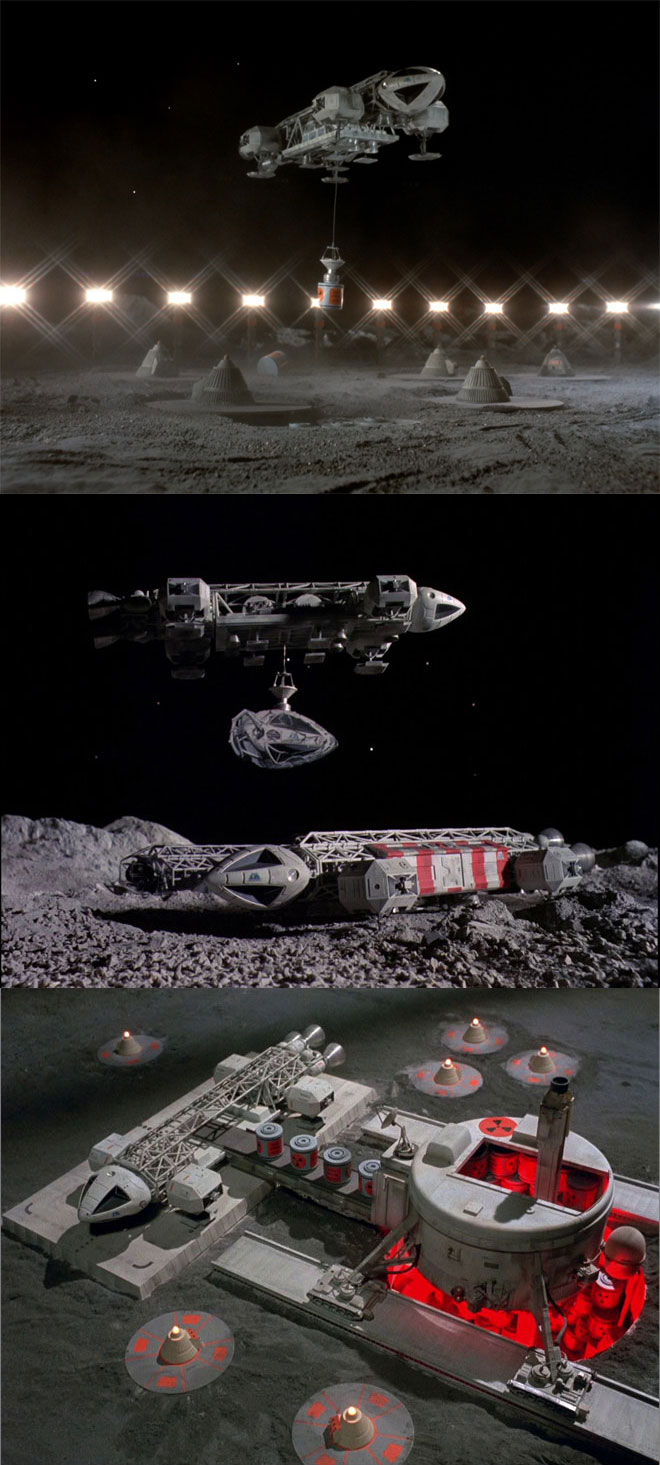
Awesome. Simply fantastic work.
It is great to see all the care and effort and love you guys put into this.
Splendid work!
As a professional photographer and a modeling hobbyist, I have always found Mr. Small’s techniques fascinating. I’ve observed his work off and on for close to 20 years going back to articles in the UK Sci-Fi and Fantasy Models International magazine.
Modern CG movie and TV effects are obviously superior in any measureable way, but the craftsmanship in construction and photography that went into the extraordinarily convincing “low-tech” effects in the 1970’s are lost arts and skills. Small’s work recaptures this.
Great stuff.
I hope Round2 and James Small are thinking “Hawk” for sometime in the future. A lesser seen ship, but with equal appeal…
An amazing job done and congratulations!!
I need a time machine to take us back to 1974 Bray Studios
and.have you guys on my FX crew!!!
Brian J
Folks, I present THE Mr. Brian Johnson! Thank you SO much for checking in and for your kind comment, sir.